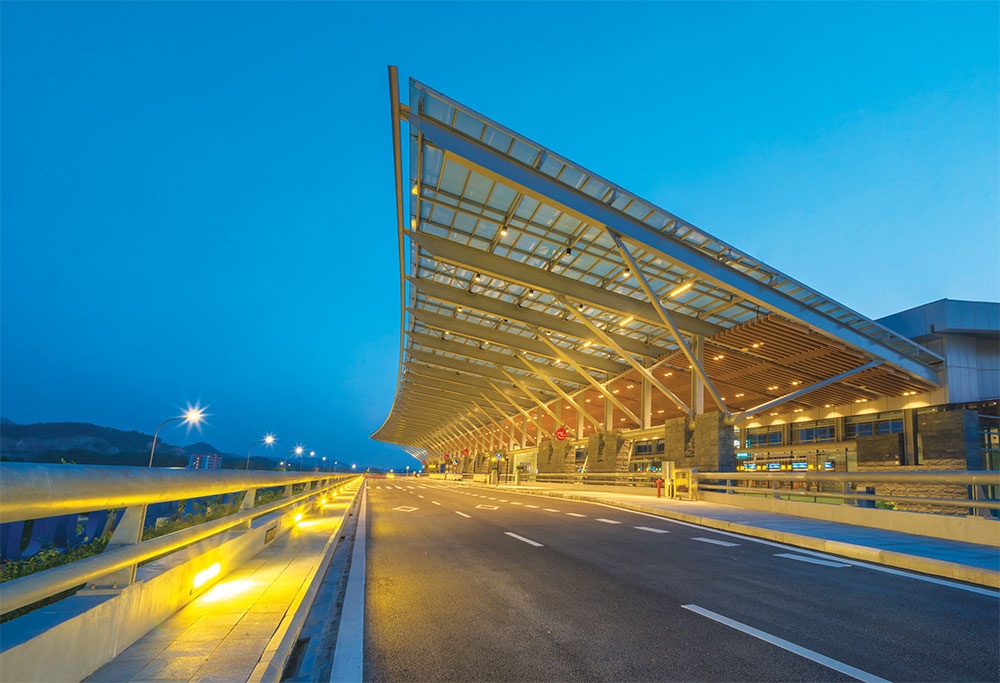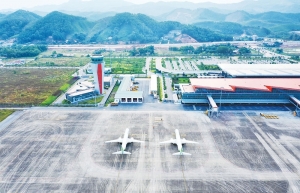New airport developments set to take off soon
Nguyen Van Vinh, deputy director of the Vietnam Institute for Development Strategies under the Ministry of Planning and Investment, welcomed the developments.
 |
| New airport developments set to take off soon |
“The development of new small airports is necessary, especially as Vietnam’s airport network remains smaller than in many countries in the region. With an open economy, Vietnam has witnessed a rising demand for travel and trade activities,” he told VIR’s roundtable on airport development on October 11.
The International Air Transport Association has forecast that, by 2035, Vietnam’s aviation sector will cater to up to 136 million passengers, double the expected number this year. However, Vietnam has only 22 airports, with many domestic terminals exceeding their designed capacity.
There are several examples from the past and present showing how airfields provide a boost to localities across the country.
Phu Quoc International Airport was built on the site of an old airfield developed during the French colonial period, and now it is one of the most visited areas of the country, while Quang Ninh is the first northern province to have a completely new airport since 1975.
Van Don International Airport, developed by Sun Group, is the first private airport in Vietnam. A civil and military facility in Quang Ninh, only 20km from Cam Pha city, it is expected to be the backup for Noi Bai International Airport in Hanoi. This contributes to shaping an important economic pole for the northeast localities of Quang Ninh, Haiphong, Hai Duong, and Hung Yen.
The economic area boasts a strategic location and abundant workforce to lure foreign direct investment. Vietnam Chamber of Commerce and Industry data shows that the four localities are magnets to foreign investors with over 2,000 related projects, trailing behind Ho Chi Minh City, Hanoi, and the southern province of Binh Duong.
Looking further afield, China has successfully developed its local airport system, and the question is whether Vietnam can attract private investors to develop local airports.
The Civil Aviation Administration of China has rolled out the red carpet for private investors to raise funding for civil airports.
Chinese policymakers set the goal of reducing state-owned airports while promoting the public-private partnership model in the development and exploitation of new airports.
The move is expected to ease financial pressure on the government and accelerate the construction progress. As of 2021, China boasts 248 airports, as reported by the Centre for Aviation.
Plans released in February 2021 indicate that China aims to have 400 civilian transport airports by the end of 2035 based on the estimated increase in passenger numbers. It means China will average around 10 new airports a year by 2035.
The Vietnamese government plans to develop 14 local airports by 2030, but this will depend on the market’s demand and the local community, with experts in the field pointing out that localities need to identify the reasonable level and potential for airport development carefully.
Industry leaders made clear at VIR’s roundtable last week on small airport development that assigning reasonable responsibility between the state and the private sector will help monitor investment risks for these projects.
 | Shifting methodologies in local aviation planning Localities up and down the country are pondering the next moves when it comes to connectivity through the air. Dr. Nguyen Dinh Cung, former director of the Central Institute for Economic Management, discussed policy-related considerations in regional airport planning with VIR’s Van Nguyen. |
 | Finding suitable models for small airports in Vietnam Michel Werson, chief economist and lead of Financial Advisory at NACO – a subsidiary of Royal HaskoningDHV – delves into the ins and outs of airport development. |
 | Utilising national advantages with crucial infrastructure Small airports and dual-use airports are expected to be valuable infrastructure fulcrums for many remote localities to attract investment and exploit the advantages of tourism, if selected and added to the plan and early investment implementation. |
What the stars mean:
★ Poor ★ ★ Promising ★★★ Good ★★★★ Very good ★★★★★ Exceptional
 Tag:
Tag:
Related Contents
Latest News
More News
- Global partnerships key to Vietnam’s IFC development (December 26, 2025 | 16:18)
- Vingroup pulls out of bid to invest in North-South high-speed railway (December 26, 2025 | 11:42)
- Strengthening supply chains through trade promotions and customs reform (December 24, 2025 | 14:00)
- PM orders investment model for North–South high-speed rail (December 22, 2025 | 17:43)
- LS Eco Energy to invest in Vietnam rare earth sector (December 22, 2025 | 17:31)
- Government moves to establish International Financial Centre (December 21, 2025 | 21:00)
- Vietnam's IFC to target global investment flows (December 21, 2025 | 18:00)
- Two national hospitals expand capacity with new facilities (December 20, 2025 | 09:00)
- Ha Tinh breaks ground on major Vingroup industrial and energy projects (December 19, 2025 | 18:24)
- EVN launches major power infrastructure projects nationwide (December 19, 2025 | 18:17)























 Mobile Version
Mobile Version